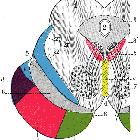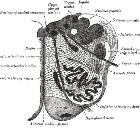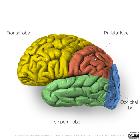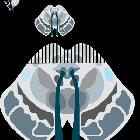brainstem

An anatomical
illustration from the 1908 edition of Sobotta"s Anatomy Atlas
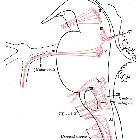
Brainstem •
Brainstem motor nuclei - Gray's anatomy illustration - Ganzer Fall bei Radiopaedia
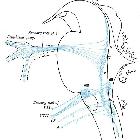
Brainstem •
Brainstem sensory nuclei - Gray's anatomy illustration - Ganzer Fall bei Radiopaedia

Brainstem •
Brainstem embryology - diagram - Ganzer Fall bei Radiopaedia

Brainstem •
Decussation of fibers in the brainstem (Gray's illustration) - Ganzer Fall bei Radiopaedia
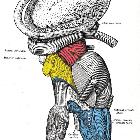
Brainstem •
Brainstem tracts (Gray's illustrations) - Ganzer Fall bei Radiopaedia

Midbrain •
Brainstem - Gray's anatomy illustration - Ganzer Fall bei Radiopaedia
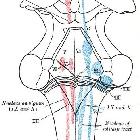
Oculomotor
nucleus • Brainstem nuclei: dorsal section (Gray's illustration) - Ganzer Fall bei Radiopaedia
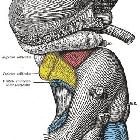
Midbrain •
Brainstem - Gray's anatomy illustration - Ganzer Fall bei Radiopaedia
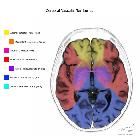
Middle
cerebral artery (MCA) infarct • Cerebral vascular territories (illustration) - Ganzer Fall bei Radiopaedia
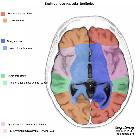
Cerebral
venous thrombosis • Brain venous vascular territories (diagram) - Ganzer Fall bei Radiopaedia
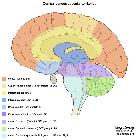
Cerebral
venous thrombosis • Venous vascular territories of the medial cerebral cortex (illustration) - Ganzer Fall bei Radiopaedia

Midbrain •
Brainstem cross-sectional anatomy (diagrams) - Ganzer Fall bei Radiopaedia

Anterior
inferior cerebellar artery • Brainstem arterial territories (diagrams) - Ganzer Fall bei Radiopaedia
The brainstem is the most caudal part of the brain. It adjoins, is structurally continuous with the spinal cord and consists of the:
- midbrain (mesencephalon)
- pons (part of the metencephalon)
- medulla oblongata (myelencephalon)
The brainstem provides the main motor and sensory innervation to the face and neck via the cranial nerves. It also provides the connection of the cerebrum, basal ganglia, diencephalon, cerebellum and spinal cord. Additionally, there are other brainstem nuclei.
The brainstem also plays an important role in the regulation of cardiac and respiratory function. It also regulates the central nervous system and is pivotal in maintaining consciousness and regulating the sleep cycle.
Some taxonomies describe the brainstem as only containing the medulla oblongata and pons, whereas others include the midbrain.
Siehe auch:
- Cerebellum
- Pons
- Medulla oblongata
- Mesencephalon
- Hirnnerven
- Cerebrum
- Basalganglien
- diencephalon
- brainstem nuclei
- Stammhirn
und weiter:
- Nervus trigeminus
- Thalamus
- Nervus facialis
- Zentrale pontine Myelinolyse
- Circulus Willisi
- Medulla
- posterior cerebral circulation
- neuroradiologisches Curriculum
- extrapontine myelinolysis
- cerebral peduncles
- möbius syndrome
- Hirntod
- brain development
- sub acute necrotizing encephalomyelopathy
- aqueduct of Sylvius
- Tegmentum (Gehirn)
- posterior fossa astrocytoma
- Thrombose Arteria vertebralis
- Nervus trochlearis
- Syringobulbie
- Tectum mesencephali
- corpora quadreigemina
- Anatomie Cerebrum
- Hirnstammblutung
- myelination pattern on MR imaging

 Assoziationen und Differentialdiagnosen zu Anatomie Hirnstamm:
Assoziationen und Differentialdiagnosen zu Anatomie Hirnstamm:

